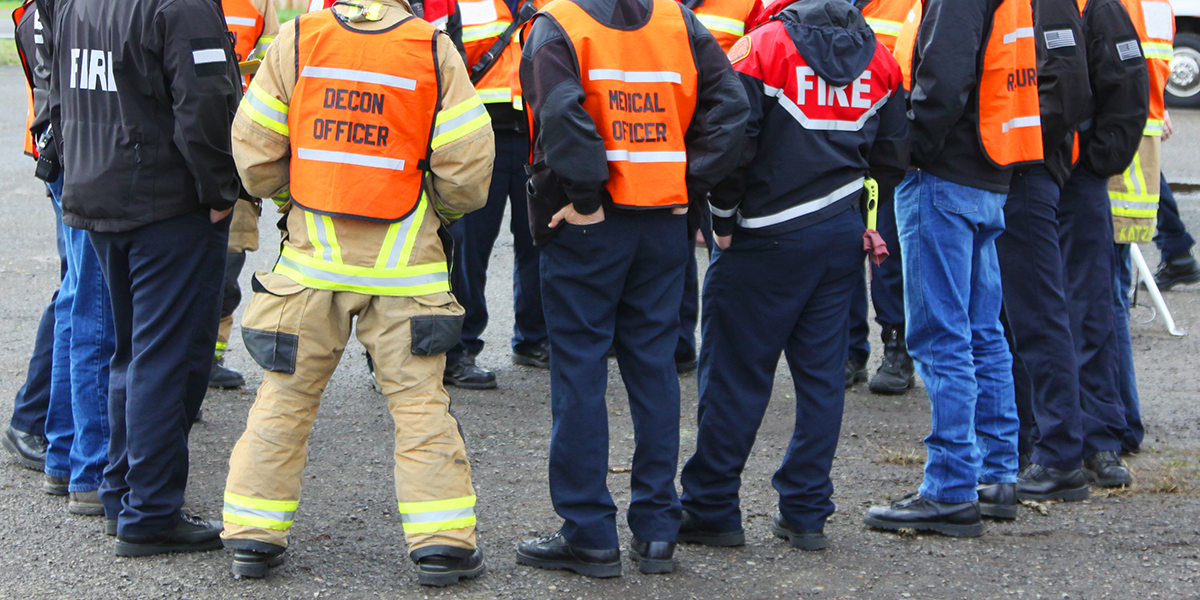Does your housing organization have insurance coverage to protect lost, stolen, or damaged business personal property?
You might tell yourself, "of course, that's what our property insurance policy is for," but that's not always accurate. It depends on how your policy is written.
Property insurance is necessary to protect your housing organization's buildings and structures from covered perils. But business personal property, also called business contents, isn't included in the standard coverage package in most commercial property insurance policies, said Jennifer Humphrey, senior account executive with HAI Group's Account Services team.
"Your organization probably owns a great deal of business personal property that you don't think about daily," Humphrey said. "You might even assume such items are already covered under your property policy, but that's not always the case. We're here to ensure these items are protected in the event of an eligible loss event."
She said that having insurance to cover the cost of repairing or replacing business personal property is critical for any housing organization.
What is business personal property (BPP) insurance?
Business personal property is generally anything of value that isn't affixed to a building or structure.
Your business contents generally include any physical, movable items your organization owns for business operation:
- Office supplies and files
- Office furniture
- Common area furniture and recreational amenities
- Computers and electronics
- Heavy equipment and machinery

Business personal property (BPP) insurance, also known as business contents insurance, provides coverage for these items in the event they're lost, damaged, or stolen.
BPP insurance is similar to the contents coverage offered through homeowners and renters insurance policies. Humphrey previously worked in the personal lines insurance industry and said she would often receive client questions about the contents portion of homeowners insurance policies.
"People wondered what contents insurance covered," Humphrey explained. "My simple answer was if you were to turn your house upside down, anything that falls out would be considered its contents. Or, if you were to move out of your house, the items you would pack and take with you would be considered its contents. The same sentiment can be applied to business contents owned by a housing organization."
Critical coverage for business contents within leased and owned properties
Securing coverage for business contents in any leased or owned office, storage, or warehouse facility is recommended.
Just like tenants can purchase renters insurance to protect their personal property, your organization can buy standalone BPP insurance to cover any business contents located within the confines of a leased or rented property.
"If you're leasing space, the building is covered by the owner, but the contents you own are still your responsibility," Humphrey said.
For owned properties, BPP insurance is usually added as a property policy endorsement, she said.
BPP insurance is also recommended for any business contents within residential buildings. For example, a common area for residents might include couches, a pool table, and a television. Those are our business contents. Not every residential building has business contents, so it's up to your organization to take inventory and decide if coverage is necessary for that property. You can always ask your HAI group account executive if you need help.
Scenario: Storing cabinets in a building without BPP coverage

In an actual scenario, a housing organization stored uninstalled cabinets in two side-by-side vacant units during a renovation project. The building didn't have a BPP policy at the time. The cabinets were not installed, thus they were considered business contents and not part of the building, according to the policy. A fire destroyed the cabinets, and they weren't covered because a BPP policy wasn't in place.
"This is the type of scenario that can be avoided by staying in close contact with your HAI Group account executive regarding any changes at your organization," Humphrey said.
Housing organizations can request per occurrence coverage limits based on the estimated value of business contents within a property, said Ken Merrifield, vice president and director of HAI Group's Account Services team.
"We usually recommend setting your contents coverage limits higher so that you don't have any issues replacing lost items," he said, noting that for the value it provides, BPP insurance is relatively inexpensive.
There may be situations where BPP coverage limits on a building may need to be increased. Merrifield used the scenario of a central warehouse temporarily storing overstock refrigerators and dishwashers during a building rehabilitation project. If a fire were to destroy the warehouse and the BPP coverage limits weren't high enough, the organization might not fully recoup its losses. Limits can be adjusted by your insurer upon request.
"At the end of the day, our goal is to ensure your organization has the coverage it needs to recover from a loss," Merrifield said. "It's incumbent that you read your organization's property insurance policy closely and consult a knowledgeable insurance representative if any questions or concerns arise."
Are you interested in learning more about BPP coverage for your housing organization? Contact your HAI Group account executive or a member of our business development team.
This article is for general information only. HAI Group® makes no representation or warranty about the accuracy or applicability of this information for any particular use or circumstance. Your use of this information is at your own discretion and risk. HAI Group® and any author or contributor identified herein assume no responsibility for your use of this information. You should consult with your attorney or subject matter advisor before adopting any risk management strategy or policy.
HAI Group® is a marketing name used to refer to insurers, a producer, and related service providers affiliated through a common mission, management, and governance. Property-casualty insurance and related services are written or provided by Housing Authority Property Insurance, A Mutual Company; Housing Enterprise Insurance Company, Inc.; Housing Specialty Insurance Company, Inc.; Housing Investment Group, Inc.; and Housing Insurance Services (DBA Housing Insurance Agency Services in NY and MI).






